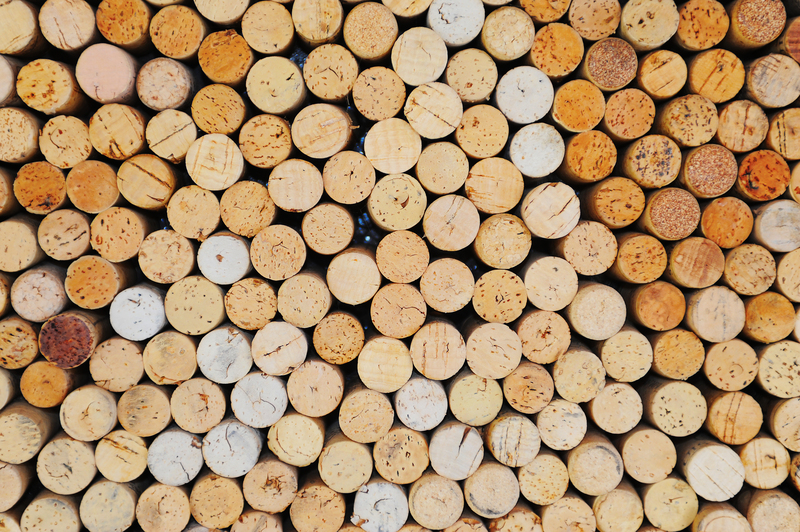Cycles of Waste: Historical Approaches to Trash
Waste is an inevitable byproduct of human civilization. From ancient refuse heaps to modern recycling programs, the way societies have managed trash reveals much about their technologies, values, and economies. Understanding the historical cycles of waste not only sheds light on the evolving relationship between people and their environment, but also offers valuable insights for addressing today's mounting trash crisis. In this comprehensive article, we explore diverse approaches to garbage throughout history, examine the roots of waste management, and consider the lessons the past holds for building a more sustainable future.

The Origins of Trash: Early Human Societies
The story of human waste begins with the origins of humanity itself. Early hunter-gatherer groups produced very little trash, as nearly all materials used--from tools to food containers--were biodegradable or repurposed. Every item had intrinsic value. Bones became tools, hides became clothing, and plant matter decomposed. The concept of "waste" as we know it today was virtually nonexistent.
Sedentary Societies and the First Refuse Heaps
- With the rise of agriculture and permanent settlements, waste patterns changed dramatically.
- Domestic refuse, including pottery shards, bones, and ash, began to accumulate in dedicated middens (refuse heaps).
- Archaeologists use these ancient dumps to reconstruct daily life, diets, and material culture of past civilizations.
Cycles of trash in early towns reflected a more visible environmental footprint compared to nomadic lifestyles. Waste was often buried, burned, or fed to animals, keeping much of it out of sight and recirculated into the local ecosystem.
Ancient Civilizations: Trash, Status, and Sanitation
The Waste Management of the Greeks and Romans
The ancient Greeks and Romans pioneered organized approaches to street cleaning and public sanitation, laying the groundwork for modern waste management. In Athens, household trash might be collected and dumped outside city walls, while Rome's complex sewer systems, like the great Cloaca Maxima, represented a leap forward in public health.
- Roman law forbade dumping garbage in the streets, though enforcement was a perennial challenge.
- Organic waste was often recycled as compost or animal feed.
- Artisans and builders would repurpose rubble for new construction.
However, the cycles of waste in large ancient cities often led to the accumulation of rubbish in poorer neighborhoods, foreshadowing modern environmental justice issues.
Maya, India, and the Islamic World: Diverse Approaches to Refuse
Other ancient cultures developed their own waste traditions.
- The ancient Maya built discard areas at city outskirts.
- Indian texts prescribed detailed rules regarding waste disposal and personal cleanliness.
- Islamic cities established municipal street cleaning and shared latrine systems, especially as urban centers grew.
Medieval Waste: Out of Sight, Out of Mind
Europe's Middle Ages ushered in a period where waste, particularly in cities, became both an environmental and social headache. With limited infrastructure, refuse--animal dung, kitchen waste, and commercial byproducts--often found its way into streets, rivers, or open fields. Laws mandated periodic cleaning, but enforcement remained inconsistent.
- Chamber pots were routinely emptied out of windows, leading to epic sanitation challenges.
- Guilds sometimes managed hazardous industrial waste, like tannery runoff or blacksmith slag.
- Rural societies continued older cycles of waste, composting organic materials and reusing everything possible.
Despite these difficulties, the medieval period saw the persistence of recycling and reuse--metal scraps were collected, rags were sold to paper mills, and animals scavenged organic waste. These practices were both practical and necessary in an era before mass production.
The Industrial Revolution: Trash Takes Center Stage
The Industrial Revolution in the 18th and 19th centuries triggered an unprecedented explosion in urban waste. Factories mass-produced goods, packaging, and byproducts at rates never seen before. Populations swelled in new industrial towns, overwhelming traditional waste-handling methods.
Birth of Municipal Sanitation
- London, Paris, and New York battled with overflowing landfills, polluted groundwater, and outbreaks of disease (such as cholera and typhoid).
- Cities created dedicated departments for removing garbage, initially with horse-drawn carts and later with motorized vehicles.
- Incineration ("destructors") and land burial gained popularity, separating trash from daily living spaces but creating new environmental risks.
The cycles of waste management had shifted: trash was increasingly treated as something to be "disposed of" rather than repurposed.
From Ragpickers to Recycling
Not everyone participated in the throwaway culture. Ragpickers, scavengers, and informal recyclers salvaged valuables--cloth, glass, and metal--highlighting ongoing cycles of resource recovery. The ash pits of the coal age provided materials for brickworks, and early recycling programs targeted newspaper and scrap metal.
20th Century: Modern Waste and the Rise of Consumerism
The Birth of the Throwaway Society
With the post-war economic boom came a dramatic increase in packaged goods, plastics, and single-use products. Advertisements encouraged the convenience of disposability, and landfills expanded accordingly. "Out of sight, out of mind" became the prevailing philosophy.
- By the 1950s, suburbs sprang up with private trash collection services and standardized curbside bins.
- Incineration remained common in densely populated cities, despite concerns about air pollution.
- Hazardous waste--chemicals, batteries, electronics--posed new challenges for municipalities and environmental regulators.
Environmental Movement and Recycling Redux
The late 20th century brought a powerful backlash against unchecked waste. The environmental movement of the 1960s and 1970s spurred public awareness about the dangers of pollution and landfill overflows.
- The first Earth Day in 1970 marked a pivotal moment for the modern recycling movement.
- Deposit-refund systems for bottles and cans gained traction.
- Communities developed curbside recycling programs for paper, glass, and plastics.
However, recycling rates have historically struggled to keep pace with the sheer volume of new waste generated by consumer lifestyles.
21st Century: Rethinking the Cycles of Waste
Globalization and the Export of Refuse
As globalization accelerated, the world experienced a paradox: developed countries exported much of their recyclable--and non-recyclable--waste to other nations, often in Asia and Africa. This practice has fed new cycles of environmental degradation and social inequity.
- China, for decades the world's largest importer of plastic waste, imposed an import ban in 2018, revealing the cracks in global waste systems.
- Mountains of e-waste, often containing toxic substances, have accumulated in developing nations lacking adequate disposal infrastructure.
From Linear to Circular Economies
Modern approaches to trash emphasize the need to break free from the traditional "make-use-dispose" model and shift towards circular economies. The goal: design products and systems where nothing becomes true waste--instead, materials are continually reused, recycled, or composted.
- Zero-waste movements challenge individuals and companies to reduce, reuse, repair, and rethink consumption.
- Innovative cities like San Francisco and Kamikatsu, Japan, have set ambitious near-zero landfill goals.
- Composting and organics recycling close vital nutrient cycles that have historically been broken by urbanization.
Technology is also playing a part: advances in sorting, bioplastics, and upcycling hold promise, even as the scale of the trash problem continues to grow.

Lessons from the Past: Toward a Sustainable Trash Future
Examining the historical cycles of waste teaches us that humans have regularly adapted their waste management practices to the technologies, economies, and cultural values of the time. Some key takeaways from history include:
- Resourcefulness and reuse: In every era, scarcity and necessity drove people to salvage and recycle materials long before it became a civic duty.
- Community responsibility: Collective action, whether through ancient city ordinances or modern municipalities, is vital to maintaining clean and healthy environments.
- The limits of disposal: "Out of sight, out of mind" has never been a truly sustainable solution; environmental consequences inevitably circle back, impacting public health and natural systems.
- The importance of innovation: Advances like composting toilets or curbside sorting have been driven by persistent challenges--showing the need for ongoing adaptation and creativity.
Conclusion: Closing the Waste Loop
*The story of trash is a story of cycles*--from the earth, back to the earth, or into new forms through human ingenuity. Today's waste crisis reflects past patterns of denial, improvisation, and adaptation. By learning from history and embracing circular, regenerative approaches, societies worldwide can close the loop and restore balance to the cycles of trash. For individuals, businesses, and governments, understanding historical approaches to waste points the way toward a cleaner, more responsible future.
Frequently Asked Questions: Historical Approaches to Waste
What were the main methods of waste disposal in ancient societies?
Ancient communities typically disposed of waste by burying it in middens, burning it, or repurposing organic materials as animal feed or fertilizer. Some urban societies, like Rome, developed early sewer systems to manage both domestic and industrial waste more efficiently.
How did the industrial revolution change waste management?
The Industrial Revolution led to exponential increases in both the quantity and complexity of waste. It marked the transition from mainly biodegradable or reusable materials to mass-produced, often non-biodegradable goods. Urban centers responded by developing municipal sanitation services, landfill sites, and incineration plants.
How did people recycle before modern recycling programs?
Prior to modern recycling, people recycled out of necessity--metals, cloth, and even bones were valuable commodities. Scavengers and ragpickers played essential roles in recovering and reselling reusable materials, supporting a local economy of reuse and resourcefulness.
What is a circular economy, and how does it relate to waste?
A circular economy is an economic system aimed at eliminating waste and promoting the continual use of resources. It stands in contrast to the traditional linear economy, which moves products from manufacture to use to landfill. Circular economies seek to keep materials in use for as long as possible through recycling, repair, and upcycling.
What can we learn from historical cycles of waste?
Studying the history of waste cycles reveals the importance of innovation, shared responsibility, and the creativity of communities throughout the ages. It underscores the need for both collective action and personal accountability to manage modern challenges, echoing lessons from societies past.
By diving deep into the *cycles of trash through history*, we gain both perspective and inspiration to confront the present-day waste challenge. From ancient composters to medieval ragpickers, and from industrial-age sanitation engineers to today's zero-waste pioneers, mankind's ongoing efforts to close the loop on refuse continue to shape civilizations-- past, present, and future.